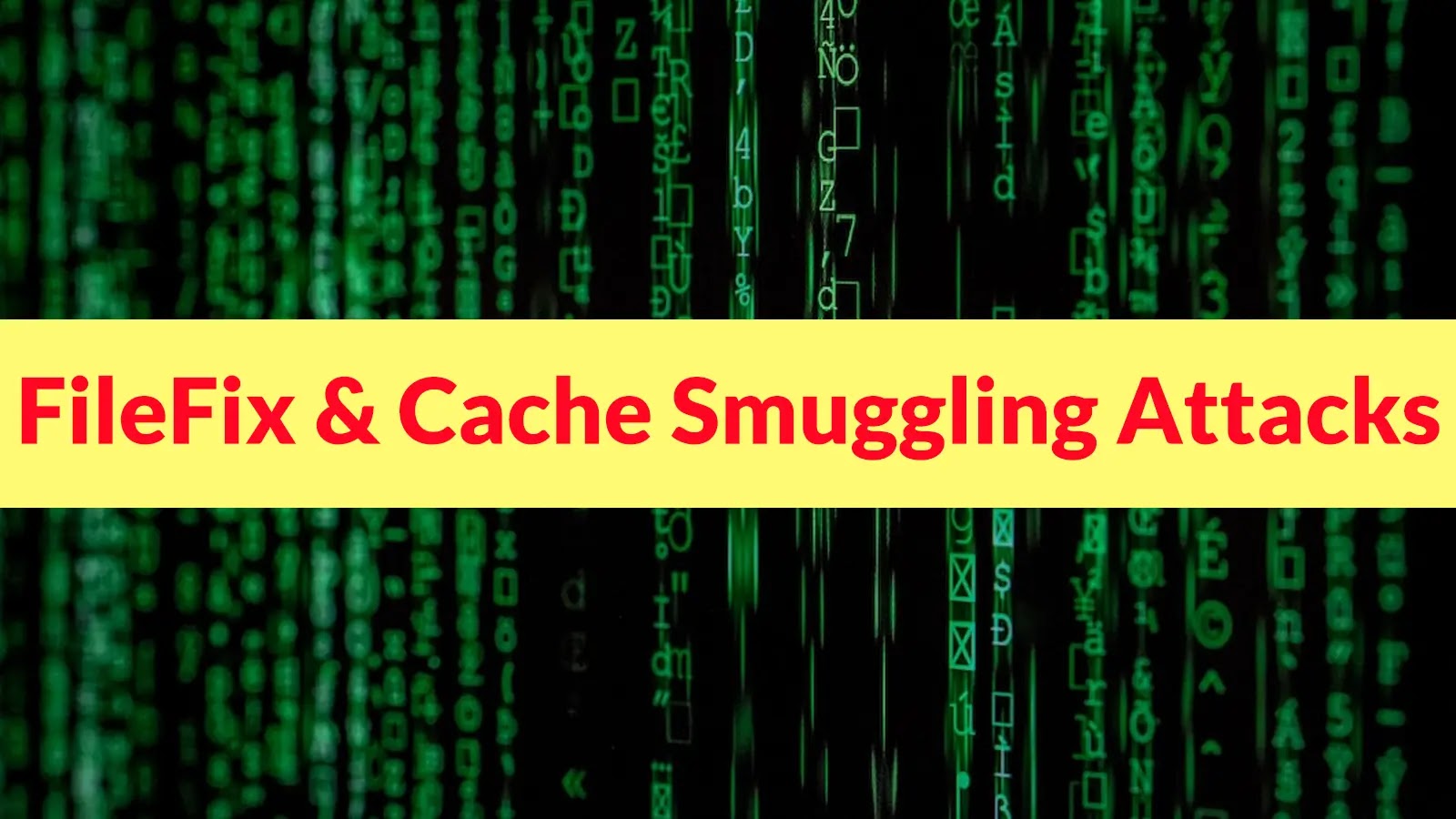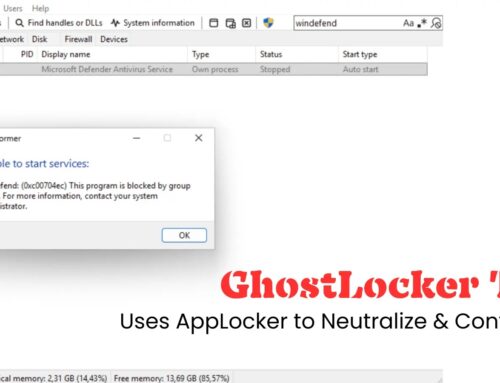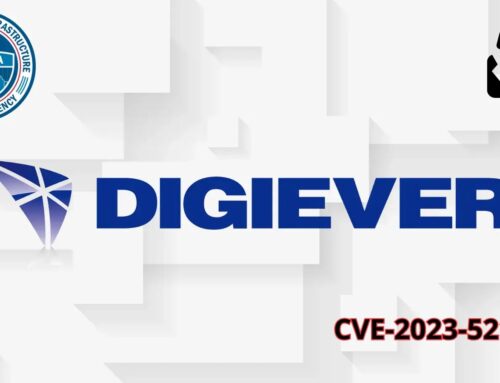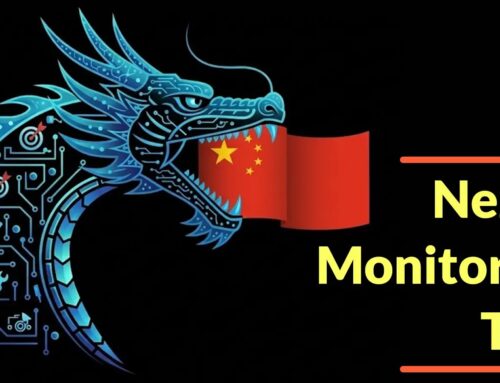
Threat Actors Merging FileFix and Cache Smuggling Attacks to Evade Security Controls
The Evolving Threat Landscape: How FileFix and Cache Smuggling Are Bypassing Your Defenses
The cybersecurity world is grappling with an increasingly sophisticated class of attack. Recent findings by cybersecurity researchers have unveiled a disturbing trend: threat actors are now strategically merging two potent techniques – FileFix social engineering and cache smuggling – to construct highly effective and elusive phishing campaigns. This hybrid methodology is proving particularly adept at circumventing traditional network-based detection systems, posing a significant challenge for IT professionals and security analysts alike. Understanding this evolution is paramount to safeguarding your organization against these advanced persistent threats.
Deconstructing the FileFix Attack Component
FileFix isn’t a new vulnerability in the conventional sense, but rather a deceptive social engineering tactic. It leverages human psychology and trust to trick users into downloading and executing malicious payloads. Typically, FileFix attacks involve:
- Masquerading as legitimate software updates: Attackers often craft convincing pop-ups or emails claiming to be from well-known software vendors, prompting users to “fix” a critical issue or apply an urgent update.
- Exploiting perceived urgency: The messaging often creates a sense of immediate need, pressuring users to act quickly without proper verification.
- Delivering seemingly innocuous files: The initial download might appear to be a benign installer or a widely used file format, lowering a user’s guard.
The efficacy of FileFix lies in its ability to bypass initial scrutiny by appearing legitimate, making it a powerful tool for initial access.
Unpacking Cache Smuggling: The Technical Evasion Tactic
Cache smuggling is the technical backbone of this hybrid attack, allowing malicious content to evade network security controls. This technique exploits how Content Delivery Networks (CDNs) and web caches store and serve content. Here’s a breakdown of its core mechanics:
- Bypassing Proxies and Firewalls: Attackers manipulate HTTP headers to trick an Intermediate Cache (like a CDN) into storing malicious content under a seemingly benign URL. When a victim requests this URL, the cache serves the malicious content directly from its cache, effectively bypassing any network-level security appliances that would normally inspect traffic originating from the actual malicious server.
- Exploiting CDN Trust: Organizations often whitelist or trust traffic originating from their CDNs, inadvertently creating a blind spot. Cache smuggling leverages this trust to deliver exploits or malware directly to end-users without their traffic ever hitting the organization’s perimeter defenses for inspection.
- Obfuscation and Evasion: The malicious payload itself is often hidden within what appears to be legitimate cached content, making it difficult for signature-based detection systems to identify the threat.
The combination of these two techniques creates a formidable challenge, as the social engineering lures users into a compromised state, and cache smuggling ensures the malicious payload reaches them undetected.
The Synergy: How FileFix and Cache Smuggling Combine
The true danger emerges when FileFix social engineering and cache smuggling converge. The attack typically unfolds in stages:
- Initial Lure (FileFix): A user receives a meticulously crafted phishing email or encounters a malicious pop-up, urging them to download a “critical update” or “fix” from a seemingly legitimate source.
- Payload Delivery (Cache Smuggling): When the user clicks the link, instead of directly connecting to a blacklisted server, their request is routed through an intermediate cache that has been “smuggled” with the malicious payload. This payload, often disguised, is then served directly from the trusted cache.
- Malware Execution: The user downloads and executes the disguised payload, believing it to be a legitimate file, thereby introducing malware into the corporate network or system.
This bypasses traditional security layers because the initial network traffic appears to originate from a legitimate CDN, and the user’s action (downloading the “update”) is socially engineered. This makes it challenging for Security Information and Event Management (SIEM) systems and Network Intrusion Detection Systems (NIDS) to flag suspicious activity.
Remediation Actions and Proactive Defenses
Given the sophisticated nature of these combined attacks, a multi-layered and proactive defense strategy is essential.
- Enhanced User Awareness Training: Regularly educate users on identifying sophisticated phishing attempts, including those masquerading as software updates. Emphasize verification of download sources directly from official vendor websites, not through pop-ups or email links.
- Strict Software Update Policies: Implement and enforce policies that mandate software updates come only from trusted, verified sources and through approved update mechanisms. Disable or restrict users’ ability to install unapproved software.
- Implement Content Security Policies (CSP): A robust CSP can help mitigate some web-based component of these attacks by restricting resources that a web page can load.
- Advanced Endpoint Detection and Response (EDR): Invest in and fully leverage EDR solutions that focus on behavioral analysis and anomaly detection rather than just signature matching. These can detect suspicious process execution or unusual file activity post-delivery.
- Network Traffic Analysis (NTA): Utilize NTA tools to monitor for unusual patterns in network traffic, even from trusted CDN sources. Look for atypical file types being served or unexpected destinations for data exfiltration.
- Web Application Firewalls (WAFs): A properly configured WAF can help prevent cache poisoning and other web-based exploits that enable cache smuggling by filtering malicious HTTP requests.
- Regular Security Audits: Periodically audit your CDN configurations and web server settings to ensure they are not vulnerable to cache manipulation or misconfigurations that could be exploited.
Essential Tools for Detection and Mitigation
| Tool Name | Purpose | Link |
|---|---|---|
| Osquery | Endpoint visibility and behavioral analysis for suspicious processes. | https://osquery.io/ |
| Suricata | Open-source Network Intrusion Detection/Prevention System (NIDS/NIPS). | https://suricata.io/ |
| OWASP ZAP | Web application security scanner for identifying cache poisoning vulnerabilities. | https://www.zaproxy.org/ |
| Elastic Security (SIEM/EDR) | Comprehensive SIEM and EDR capabilities for threat detection and response. | https://www.elastic.co/security/ |
Conclusion: Strengthening Your Defenses Against Evolving Threats
The emergence of hybrid attacks combining FileFix social engineering with cache smuggling underscores the dynamic nature of cyber threats. These tactics effectively leverage social trust, technical loopholes, and the inherent complexities of modern web infrastructure to bypass conventional security measures. Organizations must move beyond basic perimeter defenses and adopt a holistic security posture that emphasizes robust user education, advanced endpoint protection, meticulous network traffic analysis, and vigilant configuration management. Staying informed and continuously adapting defense strategies is the only way to remain resilient against the ever-innovating tactics of threat actors.





